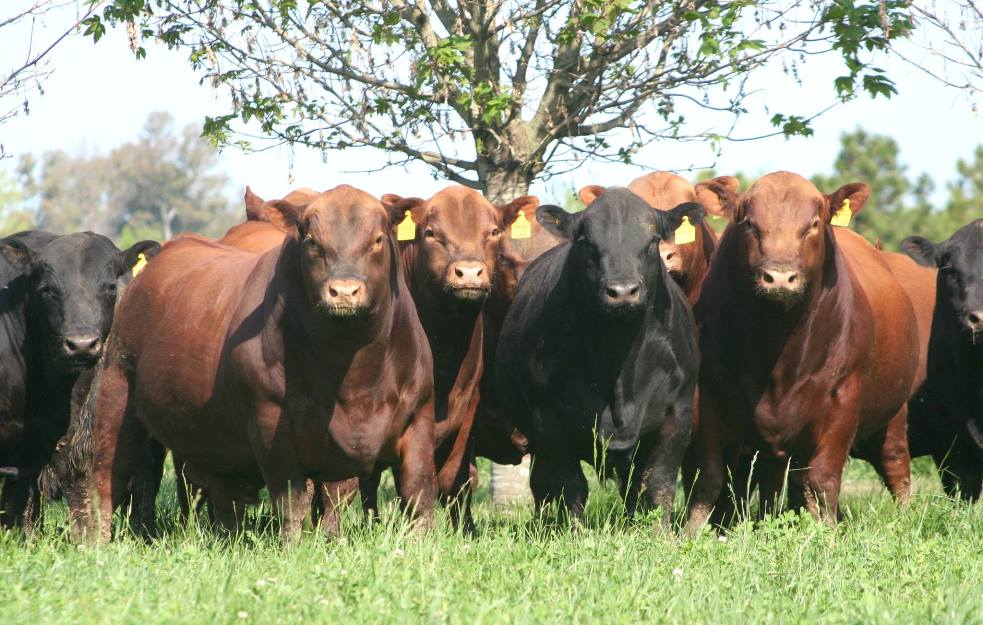
IF PRODUCERS are not aggressively accelerating the performance of their herd by using better breeding values, they’re fighting a losing battle. That’s the message from Dr Rob Banks, director of the Animal Genetics and Breeding Unit at the University of New England.
“It’s a message no producer can afford to ignore,” Dr Banks said.
“Constant genetic improvement goes a long way to offsetting the cost–price squeeze, and complements the productivity gains available through pasture and animal management.”
Many producers were tapping into the benefits of better genetics by buying bulls from breeders using BreedPlan, Dr Banks said.
“Producers who pursue genetic progress find themselves accelerating the performance of their herds in such a way that their initial investment more than pays for itself. On average, the current rate of genetic progress in British breeds is just over A$4 per cow joined per year,” he said.

Dr Rob Banks
Dr Banks said for northern Australia the rate of genetic progress for the past five years had been $1 per cow joined per year.
“The lower number in the north reflects the fact that fertility has been an important component of the index but, to date, few bull‑breeding herds have had good data on it,” he said.
“However, the research and industry data for fertility now becoming available underpins genomic Estimated Breeding Values, and we’re seeing early signs of a lift in the rate of genetic progress. There’s lots of upside potential.”
But there are still some commercial producers who aren’t harnessing the power of good genetic traits – even when they’re widely available and identified as essential to sustained profitability.
More sires backed
Many seedstock producers have embraced genetic data.
Dr Banks said the southern beef industry had pioneered the adoption of genetic information in Australia, with more than 70pc of southern bulls offered for sale backed by breeding value data.
In the north, the numbers aren’t so impressive, with around 15pc of sale bulls accompanied by breeding values data.
“This probably reflects the challenges of collecting accurate pedigree and date of birth in extensive northern breeding enterprises, coupled with a general perception that genetics data doesn’t have as much relevance in the environmental conditions of the north,” Dr Banks said.
“That perception is wrong. DNA tools are helping overcome the recording challenge. Genetics data relating to fertility in the north is now becoming available – and it reveals massive genetic ranges in lifetime weaning rate and profitability in northern breeds.”
Five top tips to get started with breeding values:
-
- Write down a clear breeding objective but ensure a balanced approach – a focus on one trait will have implications for other traits.
- Your breeding objective should focus on where you want to be in five years so you can pick the genetics today that will help you get there.
- Choose an index that suits your production system to help narrow down a large number of animals into a smaller group of potential sires.
- Spend time on your research before a sale. Remember the sire will impact your herd for the next 10–20 years.
- Select structurally sound, fertile sires with above‑average index and breeding values for traits that meet your breeding objective.
Commercial uptake
“Many commercial producers of temperate cattle breeds have got on board with breeding values over the last 10–20 years,” Dr Banks said.
“They’ve seen the value in not just relying on visually assessing potential sires, they’ve also leaned on breeding values to allow them to see into the animal’s genetic makeup and make more informed decisions.”
More and more producers were seeing that sires with better breeding values produce better progeny, and that means a better performing herd. But, there’s still room for improvement.
“Just because sires are increasingly sold with breeding values doesn’t mean commercial producers are necessarily using that information. And those who use breeding values can always strive to find sires with better breeding values,” Dr Banks said.
“The secret is to keep moving forward. Standing still means you’re actually slipping behind.”
Source: MLA



Rob, There is no such thing as a perfect set of figures, and no one can yet tell me what a good set of balanced figures look like. The fact remains that you can only compare animals within a contempary group, let alone across breeds. The “ESTIMATION” of an animals breeding value can lead to the destruction of a breeding objective, Breedplan figures, particularly growth, finishes at 600 days. This can lead you down the path of a herd with a diminishing finished weight, and finding a path out can go against all selection criteria. See South Africa’s problem with being able to get an animal finished beyond 240 kg dressed, also a high profile Breedplan herd in Qld having trouble to get weight into their herd because of a blind loyalty to figures. Fixation on figures may get you your job in the boardroom, but in the real world of ‘weight for age’ is king, and issues such as temperament and structural soundness, feeding regime, can only be assessed in real terms. This is why the real cattleman of the north, still visually assess their prospective purchases. David Raff is on the right path in his questioning of Breedplan and it’s legitimacy, look at the herds already leaving to the U.S. version “EPD’s”.
Spot on Brett,
Visual, Long, Tall. , Wide & Deep.
Outlook
Weight gain,
Eye muscle.
Testicular size, semen.
Walk
Feet.
Buy him !